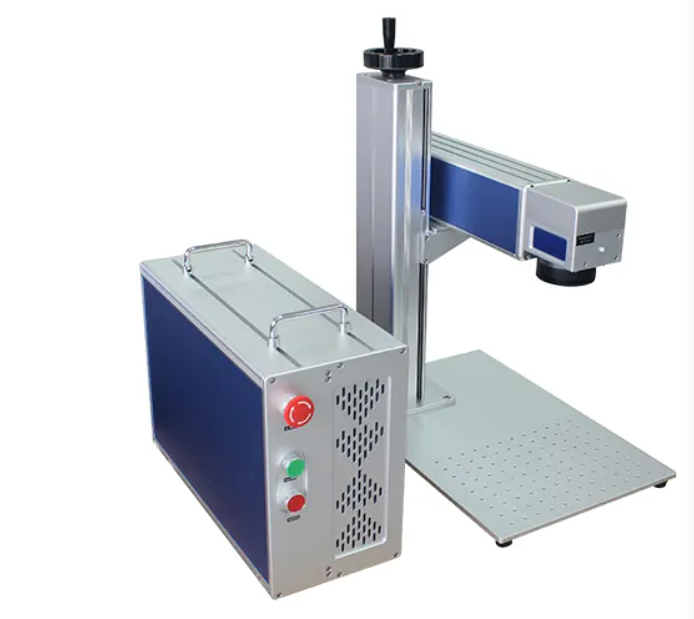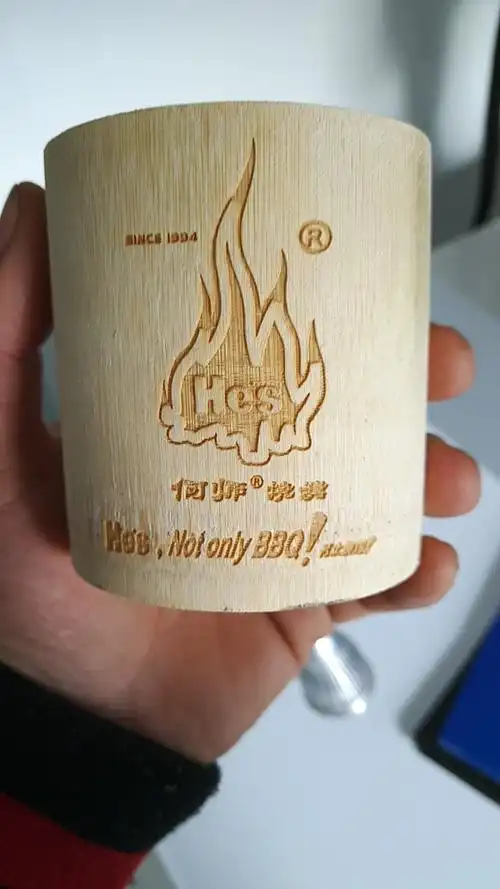The market for fiber laser marking machines looks simple at first glance — small box, bright laser, “instant engraving.” But once you start comparing quotes, you’ll find prices ranging from unbelievable low to solidly industrial. Which offers real value, and which is a trap? This article breaks down typical price tiers, explains what you’re actually buying at each level, and gives a practical checklist to help you choose a machine that won’t cost you more in downtime and repairs than you saved at purchase.

Fiber Laser Marking Machine
Typical price bands (what to expect)
Below are rough market ranges for new fiber laser marking machines, useful as a quick reference when you get vendor quotes:
20 W — ~$1,000–$1,200 (entry-level, basic desktop units)
30 W — ~$1,200–$1,500 (better cooling, more stable output)
50 W — ~$1,800–$2,000 (industrial desktop or small platform machines)
100 W — typically $3,000+ (high-power units; pricing varies with optics, galvo heads, and platform features)
If someone offers a brand-new 20–50 W fiber marker for much less than the low end above, be extremely cautious — the device may include cut-corners, a second-hand laser source, or a dubious parts mix.
Why prices vary so much — the real cost drivers
A laser marking machine price isn’t just the “laser.” Key cost drivers:
Laser source brand & age — reputable fiber laser manufacturers (well-known OEMs) charge more but offer long lifetime and consistent power. Used or refurbished laser sources lower cost — but also lifespan and reliability.
Beam quality & stability — better M² and stable power means crisper marks and consistent results over time. Cheaper lasers often drift.
Optics & scanning head — precision galvo heads, high-quality lenses and sealed optics cost more but reduce maintenance.
Cooling system — water cooling for continuous work is costlier but needed for higher power and long duty cycles. Cheap units may skimp here.
Controller & software — industrial, user-friendly software with vector/bitmap import and offline job storage adds value.
Build quality & enclosure — steel frames, safety interlocks, CE/UL compliance and durable wiring matter long term.
After-sales & spare parts — warranty length, spare parts availability and local service partners greatly impact total cost of ownership.
The common “too-cheap” tricks to watch for
When a price looks unreal, sellers usually cut one of the items above — often the laser source itself. Typical red flags:
Second-hand or relabeled laser sources — a used Raycus/JPT/IPG source or a small-brand diode repackaged as new will drop initial cost but shorten lifetime and support.
Fake brand badges — some vendors use brand names or logos without authorization.
Weak cooling & small duty cycles — advertised continuous power but poor cooling means the machine will throttle or overheat under real production.
Cheap optics and scanning heads — lower initial cost but frequent replacements and poor mark quality.
No local support or spares — if the seller is evasive about spare parts or returns, future maintenance will be painful.
A cheap price today can translate to much higher total cost through downtime, scrap parts, and repeated repairs.

Laser marking of wooden cups
How to evaluate a quote — a practical buyer’s checklist
Before you buy, verify the following (ask the supplier to confirm in writing or demo):
Laser brand & model — who made the laser source? New or refurbished? Warranty period?
Rated lifetime — expected working hours of the laser source (typical industrial sources quote tens of thousands of hours).
Power stability & beam quality — does the vendor provide a power stability curve or sample marks at start/end of shift?
Cooling type & duty cycle — water or air cooled? Continuous rating for your intended workload?
Optics & galvo head brand — sealed scanning head? Replaceable lenses available?
Software & file compatibility — vector/bitmap supported? Offline job storage? Integration with production lines?
Safety & certifications — CE, test reports, safety interlocks.
Spare parts & service — are consumables (protective lenses, connectors) stocked nearby? Is on-site service available?
Sample test — ask for a free material sample test using your materials and artwork to verify mark quality.
Total cost of ownership estimate — get projected maintenance costs and expected laser life to compare with initial price.
If the supplier refuses sample tests, or cannot name the laser brand/model and serial number, treat the deal with skepticism.
Quick buying guidance by use case
Hobby / light prototyping (occasional marks on metal/plastic): a low-power 20–30 W machine may be fine — but still insist on a sample test.
Small production / shop use: 50 W machines balance cost and throughput; prefer water-cooling if you run long shifts.
Heavy industrial marking or deep annealing: 100 W+ or specialized sources; invest in a reputable laser source and robust galvo head.
High uptime / production lines: prioritize brand-new, well-supported laser sources, local spare stocks and service contracts.
Maintenance & real ROI — why “cheap” often costs more
Real ROI isn’t just purchase price. Consider:
Downtime cost when a substandard laser fails.
Replacement optics & spare parts frequency.
Service response time (local vs overseas vendor).
Energy & cooling costs (inefficient systems can raise operating cost).
Rework/scrap from inconsistent marks.
An initially higher investment in a quality system usually pays back in fewer repairs, predictable production, and lower scrap.
Final tips — avoid the biggest mistakes
Always get a real sample test with your material and artwork.
Ask for the laser source serial number and warranty terms.
Prefer suppliers who offer local spare parts, quick support and training.
Don’t buy solely on specs sheet — insist on live demos or video of the exact machine marking your material.
Remember: price is only one part of value. Reliability, service and consistent marking quality matter far more in production.
Want help choosing the right machine?
If you’re comparing quotes or unsure which power/brand suits your materials and throughput, ZS Laser can help: we provide free sample marking tests, equipment recommendations and CE-certified machines tailored to your production needs. Contact us for a quote and a demo — we’ll match you to the machine that minimizes total cost of ownership, not just the lowest sticker price.
 ZS Laser Equipment
ZS Laser Equipment


WhatsApp
Scan the QR Code to start a WhatsApp chat with us.